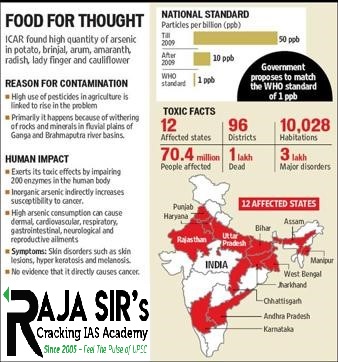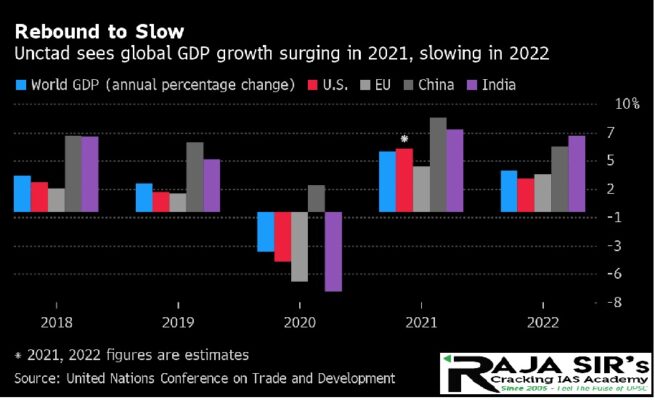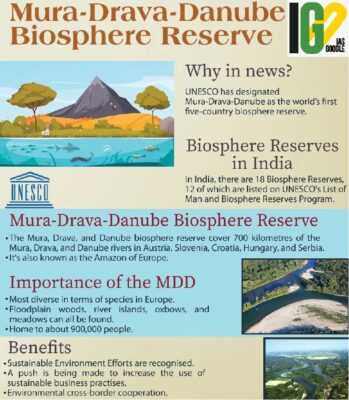- Home
- Prelims
- Mains
- Current Affairs
- Study Materials
- Test Series
 EDITORIALS & ARTICLES
EDITORIALS & ARTICLES
25th Sep 2021
INDIA POST GIVES THIS CENTURY-OLD DELICACY A STAMP OF RECOGNITION
 India Post in collaboration with Agricultural and Processed Food Products Export Development Authority (APEDA) has released a specially designed envelope to commemorate Joynagarer Moa, a century-old GI certified sweet from West Bengal.
India Post in collaboration with Agricultural and Processed Food Products Export Development Authority (APEDA) has released a specially designed envelope to commemorate Joynagarer Moa, a century-old GI certified sweet from West Bengal.







 India Post in collaboration with Agricultural and Processed Food Products Export Development Authority (APEDA) has released a specially designed envelope to commemorate Joynagarer Moa, a century-old GI certified sweet from West Bengal.
India Post in collaboration with Agricultural and Processed Food Products Export Development Authority (APEDA) has released a specially designed envelope to commemorate Joynagarer Moa, a century-old GI certified sweet from West Bengal.
- The move is aimed at boosting the exports of the indigenous food products.
- Joynagarer Moa is prepared from popped-rice ball held together with fresh date-palm jaggery.
- It originated in Joynagar, South 24 Pargana district, West Bengal more than a century back.
- Received its GI certification in 2015 due to the efforts of the ‘Joynagar Moa Nirmankari Society’.
- The study was a part of the project Nature and nurture in arsenic induced toxicity of Bihar jointly funded by the British Council in the United Kingdom and Department of Science and Technology in India.

- Arsenic content in food items was higher than that in drinking water in Bihar. The concentration was higher in cooked rice compared to raw rice.
- At least 77 per cent of households had an arsenic concentration in drinking water below the WHO guideline value of 10 μg / L.
- At least 37 per cent used some form of improved water for drinking, indicating that a significant proportion of drinking water may have had arsenic levels lower than 10 μg / L.
- The median contribution of food to overall arsenic exposure was 36 per cent when drinking water exposure was below 10 μg / L.
- Food was found to contribute more to arsenic poisoning than drinking water by 6 per cent when the arsenic concentration in drinking water was above 10 μg / L.
- The presence of high arsenic concentrations in water may result in higher total arsenic concentrations in the food which could be due to both increased arsenic in cooking and naturally high total arsenic content in grains and potato.
- Out of its 38 districts, 22 were reported to have arsenic in drinking water above the WHO provisional guide value of 10 μg / L.
- More than nine million people were estimated to be drinking water with arsenic above 10 μg/L and 33 per cent of the tested hand tube wells samples normally used for drinking water had arsenic above the WHO provisional guide value.
- Arsenic is a natural element that can be found in rocks and soil, water, air, and in plants and animals.
- Arsenic is found naturally in Earth’s crust and its inorganic form is highly toxic.
- Arsenic is one of the World Health Organisation’s 10 chemicals of major public health concern.
- Arsenic is highly toxic in its inorganic form.
- Inorganic arsenic is naturally present at high levels in the groundwater of a number of countries, including Argentina, Bangladesh, Chile, China, India, Mexico, and the United States of America.
- People can be exposed to arsenic in the environment from some agricultural and industrial sources.
- Short term impact includes vomiting, abdominal pain and diarrhoea.
- Long-term effects include skin lesions, hyperkeratosis and skin cancer.
- Arsenic exposure on cognitive development, intelligence, and memory.
- Arsenic compounds are carcinogenic to humans. This is based on sufficient evidence in humans that these compounds can cause:
- Lung cancer
- Bladder cancer
- Skin cancer
- Urban Transition:
- India’s population was 1.21 billion in 2011, with an urbanisation level of 31.1%.
- India’s urbanisation is poised to accelerate in the coming decades with rise in population.
- Estimations indicate:
- During 2011–36, urban growth will be responsible for 73% of the rise in total population (MoHFW, 2019).
- About 416 million people will be added as urban dwellers in India between 2018 and 2050 (United Nations 2018).
- India will be 50% urban by 2050 (UN-Habitat, 2017).
- Urbanisation is Central to India’s Economy:
- MoHUA (2016) stated that urbanisation contributes nearly 60% to India’s Gross Domestic Product (GDP).
- India needs action for fulfilling the full potential of urban economy and its economic growth targets:
- USD 5 trillion economy by 2024
- Total workforce estimated to be 0.64 billion by 2030, of which 0.26 billion to be employed in urban areas (MoF, 2021)
- Creation of 11 large industrial corridors as part of the National Industrial Corridor Programme, several multi-modal logistic parks, etc.
- River rejuvenation, clean air in cities, etc.
- Indian cities must be well-prepared for dealing with current challenges and a competitive future, which needs effective urban and spatial planning, urban land markets, sustainable development and governance.
- India’s Global Commitments:
- India’s has commitments to UN’s Sustainable Development Goals (SDGs) 2030; UN-Habitat’s New Urban Agenda; and Paris Agreement under UN Framework Convention on Climate Change.
- SDG Goal 11 (making cities inclusive, safe, resilient, and sustainable)—promote urban planning as one of the recommended methods for achieving sustainable development.
- New Urban Agenda adopted at Habitat III in 2016 puts forth principles for the planning, construction, development, management, and improvement of urban areas.
- Paris Agreement of 2016 relies upon the pledges of countries known as National Determined Contributions (NDCs). Urban areas hold a key in such massive emission reduction.
- Programmatic Intervention for Planning of Healthy Cities:
- The report recommends a Central Sector Scheme ‘500 Healthy Cities Programme’, for a period of 5 years, wherein priority cities and towns would be selected jointly by states and local bodies.
- Every city must aspire to become a ‘Healthy City for All’ by 2030.
- Programmatic Intervention for Optimum Utilization of Urban Land:
- The cities and towns under ‘Healthy Cities Programme’ should strengthen development control regulations to maximize the efficiency of urban land (or planning area).
- Ramping Up of Human Resources:
- States/UTs need to expedite the filling up of vacant positions of town planners.
- Need for requisite amendments in recruitment rules to ensure the entry of qualified candidates into town-planning positions.
- More institutional clarity and multi-disciplinary expertise:
- The report recommends the constitution of a high-powered committee to re-engineer the present urban-planning governance structure.
- The key aspects would be:
- Clear division of roles and responsibilities of various authorities, appropriate revision of rules and regulations, etc.
- Creation of a more dynamic organizational structure, standardisation of the job descriptions of town planners and other experts
- Extensive adoption of technology for enabling public participation and inter-agency coordination.
- Revision of Town and Country Planning Acts:
- Review and upgradation of the Town and Country Planning Acts of states.
- Formation of an apex committee at the state level is recommended to undertake a regular review of planning legislations (including town and country planning or urban and regional development acts or other relevant acts).
- Urban Planning with Citizen involvement:
- Need to enable citizens’ participation at relevant stages of urban planning. Committee strongly recommends a ‘Citizen Outreach Campaign’ for demystifying urban planning.
- Enhancing the Role of Private Sector:
- Private sector can be involved by adoption of fair processes for procuring technical consultancy services, strengthening project structuring and management skills in the public sector, and empanelment of private sector consultancies.
- Strengthening Urban Planning Education System:
- Central universities and technical institutions in all the other States/UTs are encouraged to offer postgraduate degree programmes (MTech Planning) to cater the requirement of planners.
- Faculty shortage in educational institutions conducting degree and PhD programmes in planning need to be resolved by 2022.
- ‘Planning’ as an umbrella term- include all its specializations such as environment, housing, transportation, infrastructure, logistics, rural area, regional, etc.
- Strengthening Human Resource and Match Demand–Supply:
- National Council of Town and Country Planners as a statutory body of the Government of India should be constituted.
- National Digital Platform of Town and Country Planners is suggested to be created within the National Urban Innovation Stack of MoHUA. This portal will enable self-registration of all planners and evolve as a marketplace for potential employers and urban planners.
- With 7.2 percent India would be the fastest growing economy after China, which is projected to grow by 8.3 per cent.
- The calculations are based on GDP at constant dollars in 2015.
- In India, consumer inflation was at six per cent before the pandemic. The Covid-19 shock caused a temporary dip in prices.
- As the economy recovered and food prices accelerated, the country returned to a six per cent inflation rate in mid-2021.
- Inflation based on the Consumer Price Index (CPI) moderated to a four-month low of 5.3 per cent in August 2021 from 5.59 per cent in July 2021.
- Unanticipated second wave of the pandemic, compounded by bottlenecks in the vaccine roll-out, hit India in the second quarter, on top of rising food and general price inflation.

- United Nations Conference on Trade and Development (UNCTAD) was established in 1964 to promote development-friendly integration of developing countries into the world economy.
- It is a permanent intergovernmental body under the United Nations General Assembly.
- Headquarters: Geneva, Switzerland.
- Understand options to address macro-level development challenges.
- Acquire beneficial integration into the international trading system.
- Reduce the dependency on commodities by diversifying the economies.
- Decrease their exposure to debt and financial volatility.
- Increase development-friendliness by attracting more investments.
- Increase technologies related to the digital domain.
- Give more thrust to innovation and entrepreneurship.
- Aid local firms to move up value chains.
- Trade & Development Report
- World Development Report
- The Least Developed Countries Report
- Information and Economy Report
- Commodities and Development Report
- Technology and Innovation Report

- The National Asset Reconstruction Company Limited (NARCL)- India Debt Resolution Company Ltd (IDRCL) structure is the new bad bank.
- The government has okayed the use of Rs 30,600 crore to be used as a guarantee.
- The National Asset Reconstruction Company Limited:
- It will acquire stressed assets worth about Rs 2 lakh crore from various commercial banks in different phases.
- India Debt Resolution Company Ltd (IDRCL)
- It will sell the stressed assets in the market.
- A bad bank is a bank set up to buy the bad loans and other illiquid holdings of another financial institution.
- The entity holding significant nonperforming assets will sell these holdings to the bad bank at market price.
- By transferring such assets to the bad bank, the original institution may clear its balance sheet.
- If the proportion of bad loans (calculated as a percentage of the total advances) rise, then it leads to:
- The concerned bank becomes less profitable because it must use some of its profits from other loans to make up for the loss on the bad loans.
- It becomes more risk-averse.
- In India, the level of NPAs rose alarmingly since 2016. This was a result of the RBI requiring banks to clearly recognise the bad loans on their books.
- It was argued that the government needs to create a bad bank, an entity where all the bad loans from all the banks can be placed.
- It will reduce “stressed assets” of the commercial banks allowing them to focus on resuming normal banking operations, especially lending.
- While commercial banks resume lending, the bad bank would sell these “assets” in the market.

- The NARCL will first purchase bad loans from banks. It will pay 15% of the agreed price in cash and the remaining 85% will be in the form of “Security Receipts”.
- When the assets are sold, with the help of IDRCL, the commercial banks will be paid back the rest.
- If the bad bank is unable to sell the bad loan, then the government guarantee will be invoked.
- Thus, it will be paid from the Rs 30,600 crore that has been provided by the government.
- The benefits include recovered value, and significant lending leverage because of:
- Capital being freed up from less than fully provisioned bad assets.
- Capital freed up from security receipts because of a sovereign guarantee.
- Cash receipts that come back to the banks and can be leveraged for lending, also freeing up provisions from the balance sheet.
- A bad bank can help free capital of over ₹5 lakh crore that is locked in by banks as provisions against the bad loans.
- MDD’s recognition was a mandate to all five countries to jointly advance the protection and revitalisation of the Mura-Drava-Danube area and boost sustainable business practices.

- The reserve is home to floodplain forests, gravel and sand banks, river islands, oxbows and meadows.
- It is home to continental Europe’s highest density of breeding white-tailed eagle, as well as endangered species such as the little tern, black stork, otters, beavers and sturgeons.
- It is also an important annual resting and feeding place for more than 250,000 migratory birds.
- Almost 900,000 people live in the biosphere reserve.
- The reserve represented an important contribution to the European Green Deal and contributes to the implementation of the EU Biodiversity Strategy in the Mura-Drava-Danube region.
- The strategy’s aim is to revitalise 25,000 km of rivers and protect 30 per cent of the European Union’s land area by 2030.
- Additional projects for nature and people are already being implemented in the area.
- These projects put river revitalisation, sustainable business practices enhancing cross-border cooperation into focus.
- Interreg Danube Transnational Programme: funded Amazon of Europe Bike Trail, a long-distance cycling trail following the Mura, Drava and Danube river landscapes for over 1,250 km.

- This transboundary biosphere reserve stretches along the Drava, Mura and Danube Rivers, which are separated by flood prevention dykes into an inundation area and a flood-controlled side.
- The biosphere reserve provides an important tool in learning different approaches to floodplain management.
- The biosphere reserve covers 700 kilometres of the Mura, Drava and Danube rivers and stretches across Austria, Slovenia, Croatia, Hungary and Serbia.
- The total area of the reserve in the ‘Amazon of Europe’, makes it the largest riverine protected area on the continent.
- Located in the eastern part of the country, this biosphere reserve includes the largest preserved complex of floodplains in Slovenia, where the interweaving of natural factors and human presence has created an exceptional cultural riverine landscape.
- The area of the biosphere reserve belongs to the Continental Biogeographic Region.
- The core area is a mosaic of well-preserved characteristic habitats of the middle sections of dynamic river floodplains.
- The Drava River is both the fourth largest and fourth longest Danube tributary rising in Italy.
- It drains from the southern side of the Alps to the Danube and the Black Sea.
- The Drava flows through Austria, Slovenia and Croatia. It forms the border between Croatia and Hungary, before heading back into Croatia again to meet the Danube near Osijek, where it is 320 metres wide.
- The Drava River is a typical fluvio-glacial river, which means that its highest flow is in July during the melting of glaciers, while the majority of other rivers are already showing signs of summer drought.
- The longest river in the European Union, the Danube River is the second-longest river in Europe after Russia’s Volga.
- It begins in the Black Forest region of Germany and runs through 10 countries (Germany, Austria, Slovakia, Hungary, Croatia, Serbia, Romania, Bulgaria, Moldova and Ukraine) on its way to the Black Sea.
- 19 countries share the Danube River Basin, which makes it the world’s most international river basin.
- Biosphere reserves are ‘learning places for sustainable development’.
- They are sites for testing interdisciplinary approaches to understanding and managing changes and interactions between social and ecological systems, including conflict prevention and management of biodiversity.
- They are places that provide local solutions to global challenges.
- Biosphere reserves include terrestrial, marine and coastal ecosystems.
- Each site promotes solutions reconciling the conservation of biodiversity with its sustainable use.
- Biosphere reserves are nominated by national governments and remain under the sovereign jurisdiction of the states where they are located.
- Biosphere Reserves are designated under the intergovernmental MAB Programme by the Director-General of UNESCO following the decisions of the MAB International Coordinating Council (MAB ICC).
- Their status is internationally recognized. Member States can submit sites through the designation process.
- UNESCO biosphere reserves are central to education, research and awareness-raising work to foster innovative sustainable development practices and combat the loss of biodiversity.
- The network supports local and indigenous communities and Member States’ understanding, and the protection of the natural environment.
- In order to curb the existence of all substances that add to the ozone depletion, Montreal Protocol was adopted in 16 September, 1987, where countries from across the globe decided to curb substances such as: Aerosols, Chlorofluorocarbon and Halons
- In 1994, the UN General Assembly proclaimed this day as the World Ozone Day.
- KEEPING US, OUR FOOD AND VACCINES COOL.
- The Day is celebrated every year to spread awareness among people about the depletion of Ozone Layer and the measures taken to preserve it.
- Ministry of Climate Change has been celebrating the World Ozone Day since 1995 at the National and State levels.

- Ozone layer, is a region of the upper atmosphere above Earth’s surface, containing relatively high concentrations of ozone molecules (O3).
- 90 percent of the atmosphere’s ozone occurs in the stratosphere, region.
- The ozone layer effectively blocks almost all solar radiation of wavelengths from reaching Earth’s surface, including ultraviolet (UV) and other forms of radiation that could harm most of the living things.
- The Kigali Amendment to the Montreal Protocol was finalized in 2016.
- Aim: Parties to the Montreal Protocol will phase down production and consumption of Hydrofluorocarbons, or HFCs.
- Government of India has decided to ratify the Kigali Amendment to the Montreal Protocol.
- Focus will be on developing a national strategy for phase down of Hydrofluorocarbons.
- The Ministry of Climate Change has developed India Cooling Action Plan (ICAP).
- It is aimed to look for synergies in actions having the potential to provide socio-economic and environmental benefits, to reduce refrigerant use, climate change mitigation and Sustainable Development Goals.
- The ICAP recommends synergies with government programmes and schemes like- housing for all, the Smart Cities Mission, Doubling Farmers Income and Skill India Mission, to maximize socio-economic co-benefits.
- India has phased out Chlorofluorocarbons, Carbon tetrachloride, Halons, Methyl Bromide and Methyl Chloroform for controlled uses in line with the Montreal Protocol.
- (HPMP) Stage-I has been successfully implemented from 2012 to 2016.
- (HPMP) Stage-II is under implementation from 2017 and will be completed by 2023.
- (HPMP) Stage-III will be commenced soon which will phase out the use of HCFC-22, a refrigerant used in Refrigeration and Air-conditioning manufacturing.
- AUKUS is the new enhanced trilateral security partnership between Australia, the United Kingdom, and the United States.
- It would be a collaboration of the technology, scientists, industries, defence forces of the three countries to deliver a safer and more secure region.
- The first major initiative of AUKUS would be to deliver a nuclear-powered submarine fleet for Australia.
- The deal is seen as a step towards curtailing China’s aggressive manoeuvres in the Pacific region, especially in and around the South China Sea.
- The deal has complicated the relations between France and Australia, and France and the US.
- France is outraged that it was not even informed or consulted about the decision and the new agreement.
- In 2016 —France and Australia had signed a contract to buy 12 Attack-class submarines from the French shipbuilder Naval Group worth nearly $90 billion.
- There is a case of legal battle over the contract between the two countries.
- Nuclear-powered submarine gives Navy the capability to reach far out into the ocean and launch ballistic missiles.
- The submarine can go to long distances, at a higher speed, without being detected which gives a nation the ability to protect its interests far from its shores.
- The nuclear-powered propulsion gives the submarine a near infinite capacity to stay dived.
- Since it is propelled by a nuclear-powered engine rather than by batteries, it does not have to emerge on the surface at all, except to replenish supplies for the crew.
- Conventional diesel-engine submarines have batteries which have life from a few hours to a few days.
- They are able to move faster underwater than the conventional submarines.
- India is among the six nations that have nuclear-powered submarines (SSN).
- Other five are: the US, the UK, Russia, France and China.
- INS Chakra:
- India got the Soviet-built K-43 Charlie-class SSN in 1987, rechristened INS Chakra. The submarine was decommissioned in 1991.
- INS Chakra 2:
- 2012: India got another Russian SSN on a 10-year lease, called INS Chakra 2.
- INS Arihant:
- India built its own nuclear submarine, INS Arihant, commissioned in 2016.
- INS Arihant completes India’s nuclear triad, i.e., the country has the capacity to launch nuclear missiles from land, aircraft, and submarine.
- INS Arighat:
- A second Arihant-class submarine, INS Arighat, was secretly launched in 2017, and is likely to be commissioned soon.









 Latest News
Latest News General Studies
General Studies